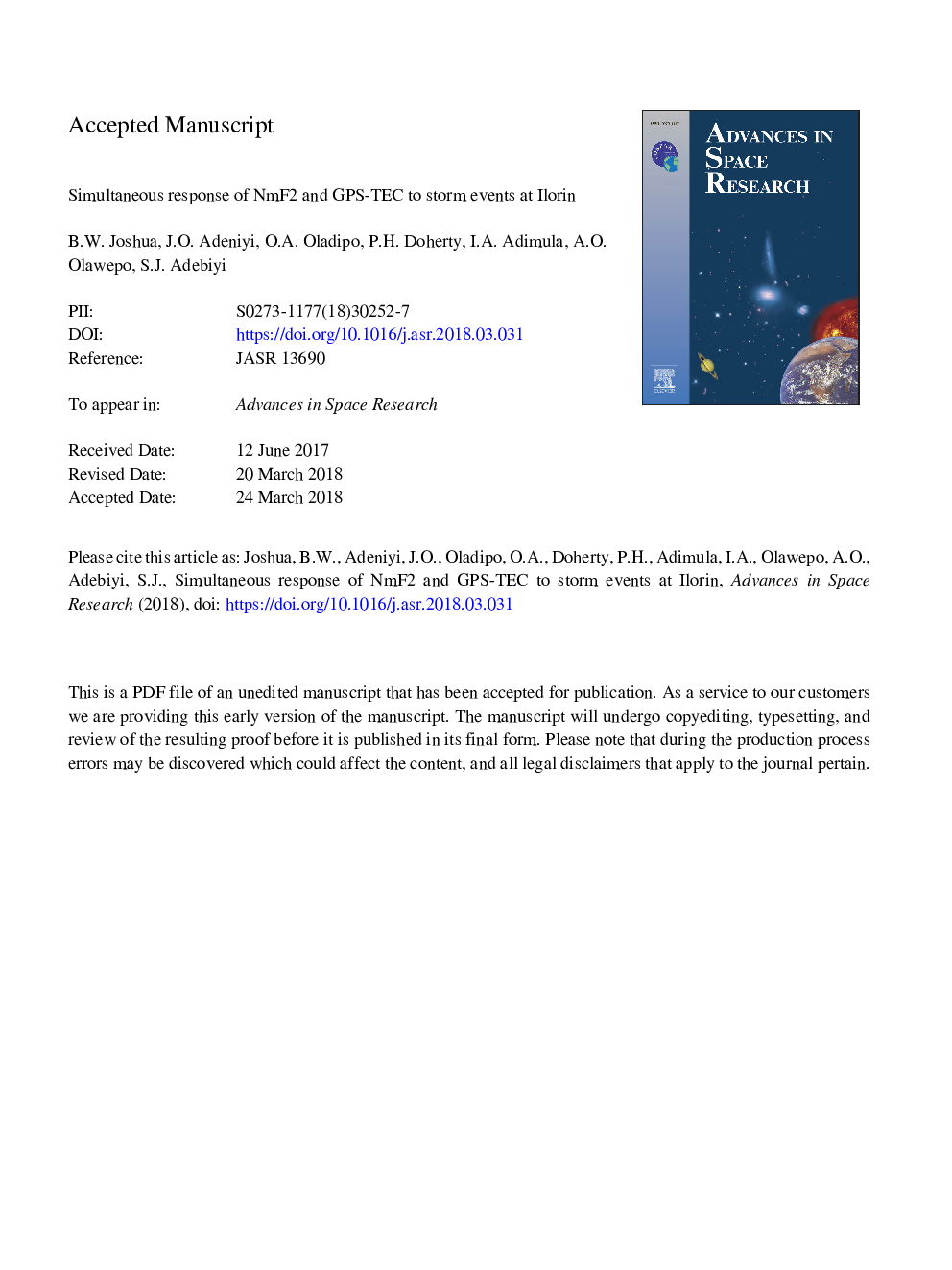| Article ID | Journal | Published Year | Pages | File Type |
|---|---|---|---|---|
| 8131849 | Advances in Space Research | 2018 | 19 Pages |
Abstract
A comparative study of both TEC and NmF2 variations during quiet and disturbed conditions has been investigated using simultaneous measurements from dual frequency Global Positioning System (GPS) receiver and a DPS-4 Digisonde co-located at Ilorin (Geog. Lat. 8.50°N, Long. 4.50°E, dip. - 7.9°). The results of the quiet time variations of the two parameters show some similarities as well as differences in their structures. The values of both parameters generally increase during the sunrise period attaining a peak around the noon and then decaying towards the night time. The onset time of the sunrise growth is observed to be earlier in TEC than in NmF2. The rate of decay of TEC was observed to be faster than that of the NmF2 in most cases. Also, the noon 'bite-outs', leading to the formation of pre-noon and post-noon peaks, are prominent in the NmF2 structure and was hardly noticed in TEC. Results of the variations of both TEC and NmF2 during the 5 April, 10 May and 3 August 2010 geomagnetic storm events showed a simultaneous deviations of both parameters from the quiet time behavior. The magnitude of the deviations is however most pronounced in NmF2 structure than in TEC. We also found that the enhancement observed in the two parameters during the storm events generally corresponds to decrease in hmF2.
Related Topics
Physical Sciences and Engineering
Earth and Planetary Sciences
Space and Planetary Science
Authors
B.W. Joshua, J.O. Adeniyi, O.A. Oladipo, P.H. Doherty, I.A. Adimula, A.O. Olawepo, S.J. Adebiyi,
